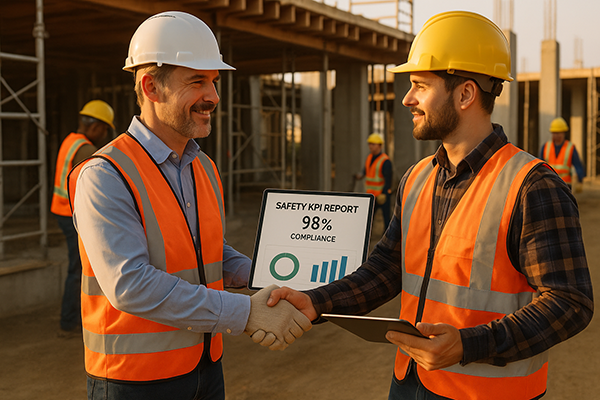
Elevating Subcontractor Accountability Through Clear Safety KPIs

Subcontractors are vital to complex project success but without clear safety accountability, they can introduce unnecessary risk. The foundation of a safe, efficient operation lies in transparent performance expectations backed by measurable safety Key Performance Indicators (KPIs). When KPIs are well-defined, safety becomes a shared responsibility across all tiers of a project.
The Occupational Safety and Health Administration (OSHA) emphasizes that general contractors and subcontractors share responsibility for maintaining safe worksites. Its Multi-Employer Worksite Policy outlines how each employer’s safety duties intersect, especially when multiple entities operate in the same location. This guidance reinforces that safety accountability cannot be delegated it must be demonstrated and tracked (Occupational Safety and Health Administration, 1999).
The U.S. Bureau of Labor Statistics (BLS) reports that in 2023, the construction industry experienced one of the highest rates of fatal occupational injuries, with a significant portion involving subcontracted labor. In total, more than 5,400 fatal work injuries occurred across all sectors, underscoring the urgency for consistent contractor oversight (U.S. Bureau of Labor Statistics, 2024).
To prevent such outcomes, OSHA recommends using leading indicators data points that predict risk rather than measure outcomes after an incident. These include near-miss reports, safety meeting attendance, and inspection closure rates, which provide insight into safety behavior trends (OSHA, n.d.).
The National Institute for Occupational Safety and Health (NIOSH) supports this proactive model through its research on safety climate and organizational accountability. A strong safety culture integrates KPI monitoring with employee engagement and transparent reporting, making subcontractor safety performance a measurable, collaborative process (National Institute for Occupational Safety and Health, n.d.).
At Key Safety LLC, we help clients develop subcontractor safety programs that meet OSHA compliance while driving continuous improvement. Our Document Development for Start-up Projects sets the foundation for KPI tracking and reporting standards. Through Service on Demand, we audit subcontractor safety documentation and training systems in real time. Our Regular Consultation Service ensures long-term accountability through tailored KPI dashboards and leadership coaching.
In safety management, what gets measured gets managed and what gets managed saves lives.
References
Occupational Safety and Health Administration. (1999, December 10). Multi-employer citation policy (OSHA Instruction CPL 02-00-124). U.S. Department of Labor. https://www.osha.gov/enforcement/directives/cpl-02-00-124
U.S. Bureau of Labor Statistics. (2024, December 19). National Census of Fatal Occupational Injuries in 2023 (USDL-24-2564). U.S. Department of Labor. https://www.bls.gov/news.release/cfoi.nr0.htm
Occupational Safety and Health Administration. (n.d.). Using leading indicators to improve safety and health outcomes. U.S. Department of Labor. https://www.osha.gov/leading-indicators
National Institute for Occupational Safety and Health. (n.d.). Safety culture in healthcare settings: Module 1. Centers for Disease Control and Prevention. https://www.cdc.gov/niosh/learning/safetyculturehc/module-1/4.html
Comments:

